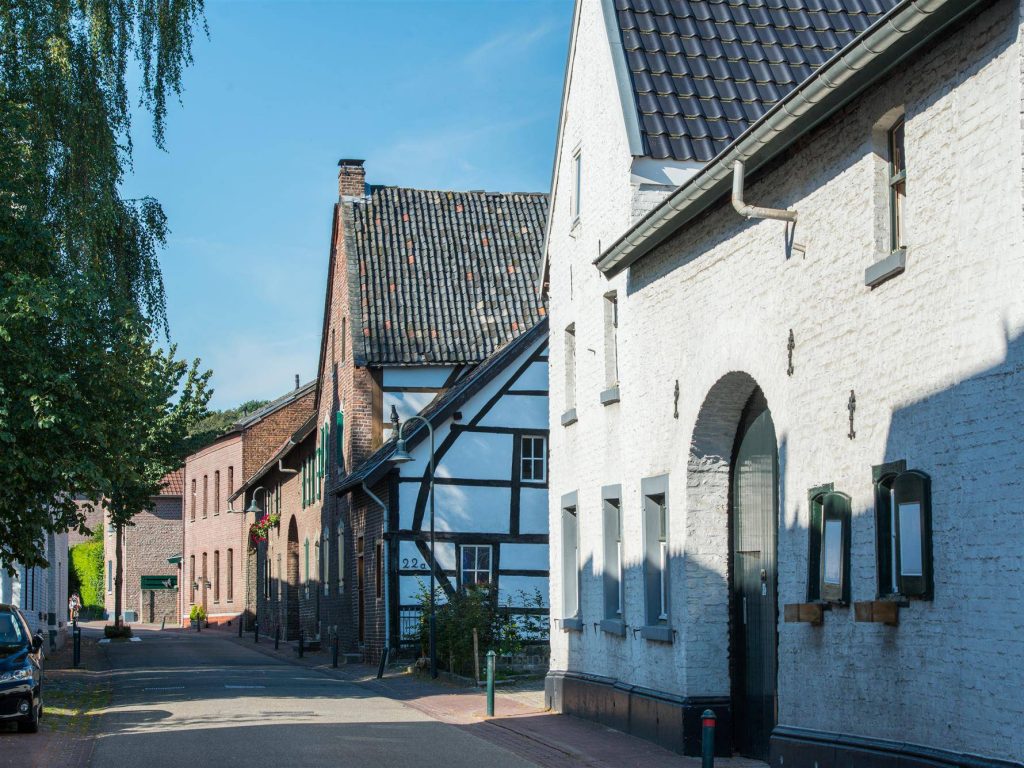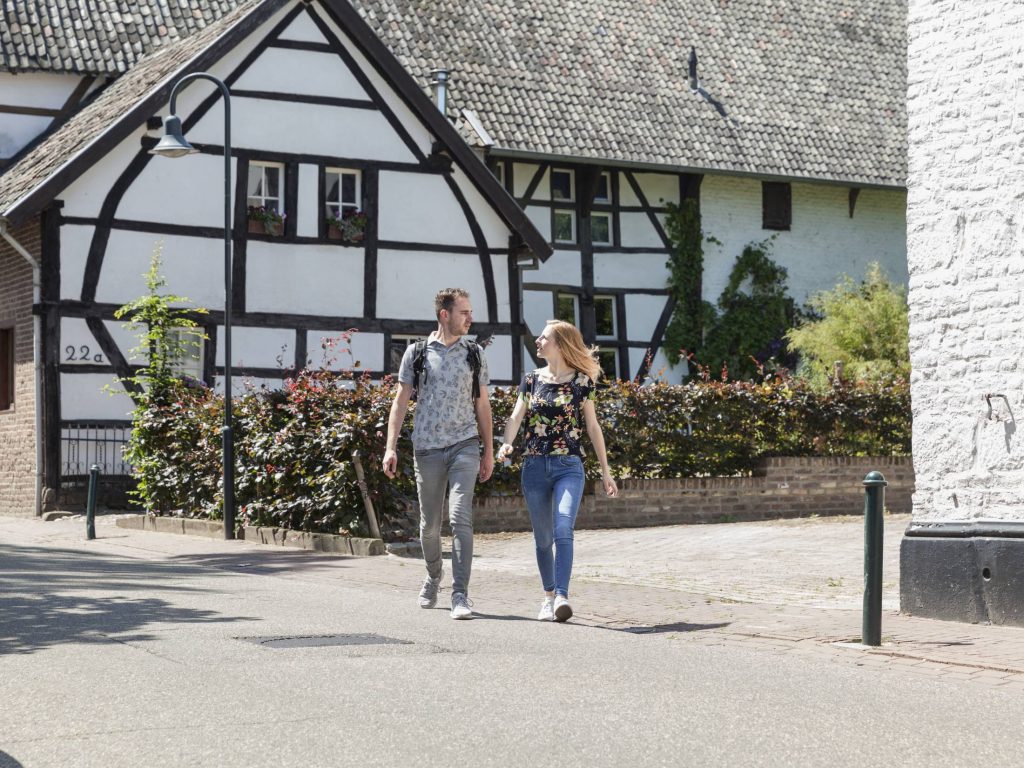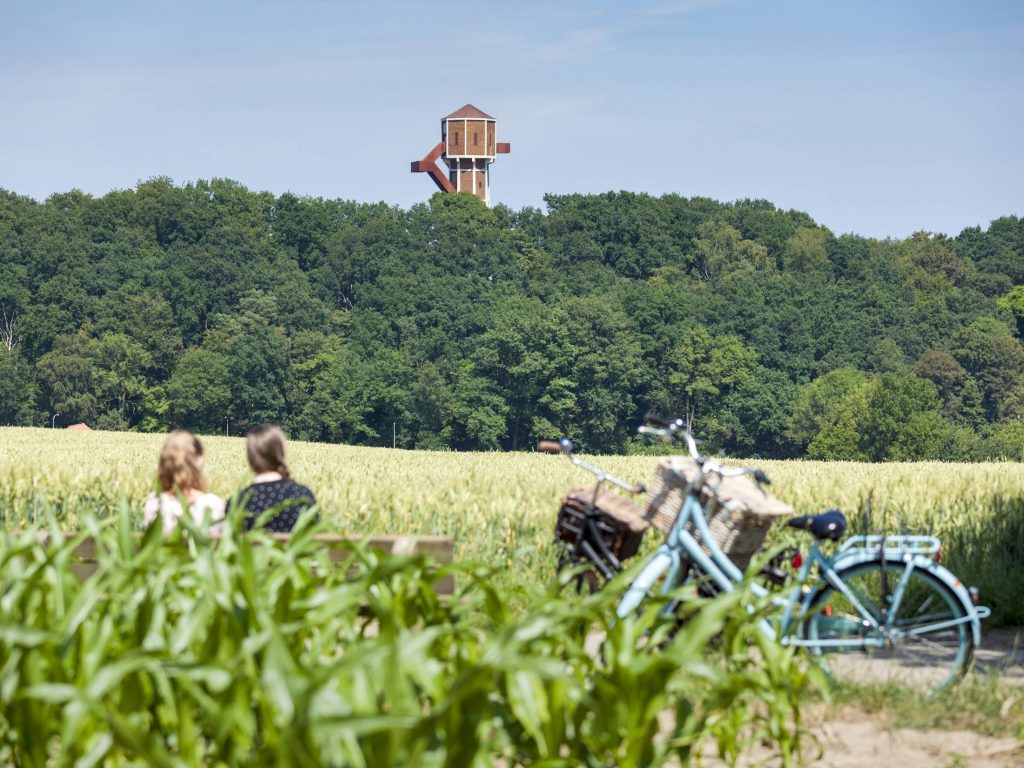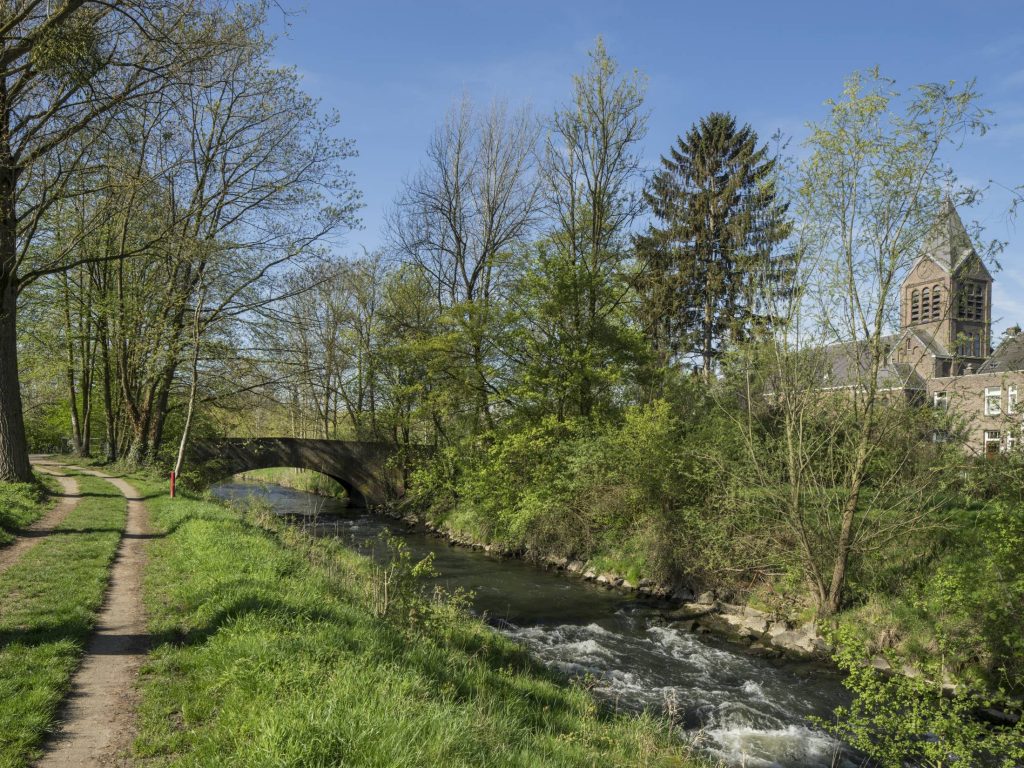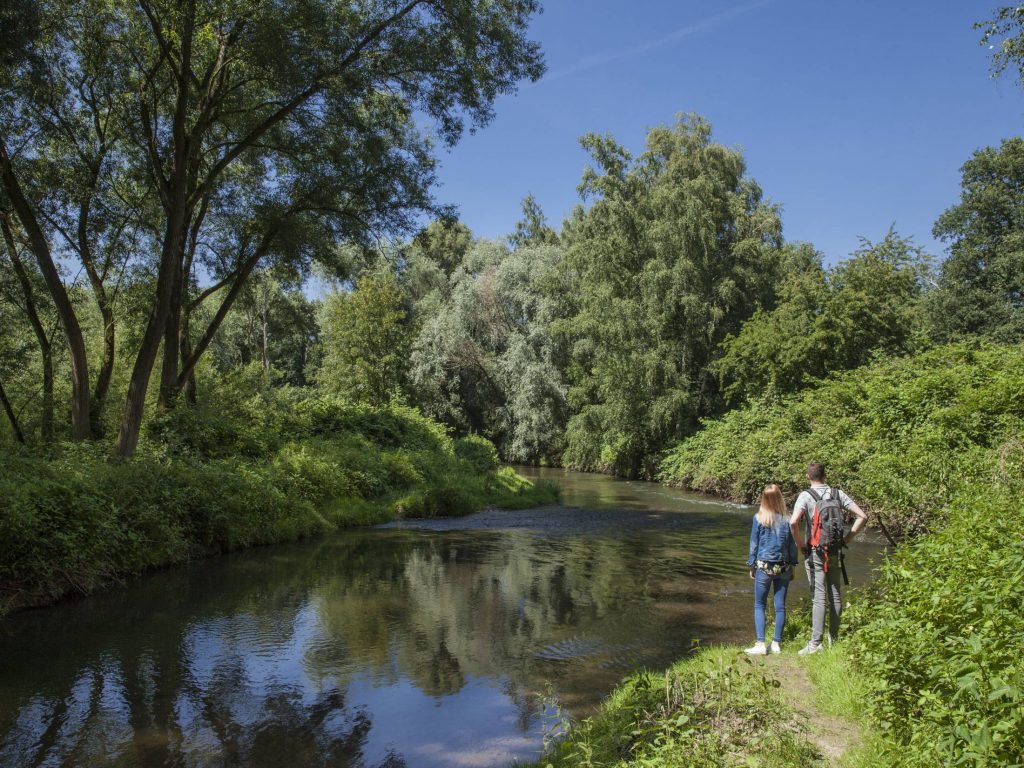A Roman roadside settlement or vicus
Brugstraat, Rimburg/Landgraaf
When you look at the beautiful monumental farmhouses, it feels as if time has stood still in Rimburg. It is a quiet village, running parallel to the river Worm. Nothing reveals that Rimburg was once a significant settlement in Roman times. Roman Rimburg developed around a wooden plank bridge over the Worm—similar to Maastricht, but on a smaller scale.
There were three Roman settlements in South Limburg: Maastricht, Heerlen, and Rimburg. In Rimburg, remains of a Roman roadside village (vicus) have been found. Here, all kinds of craftsmen worked: potters, blacksmiths, carpenters, tanners, shoemakers, and traders in fresh produce. In the shops of Rimburg, you could find everything you needed for a journey along the Via Belgica.
Today, half of Roman Rimburg lies on German territory, with the Worm forming the border. In Roman times, however, the bridge was not a border crossing. At the site of the old Roman bridge begins the Via Belgica in the Netherlands. If you follow it all the way to Maastricht, many more discoveries await you.
Discover
- Admire the protected village scenery of Rimburg
- Cross the Worm and you’re in Germany!
Fun to know
- Boundless
- Today, the small river Worm forms the border between the Netherlands and Germany. In Roman times, however, the entire area between the North Sea and the Rhine belonged to the Roman Empire. Natural barriers determined much: in Roman times, where settlements were built—such as in Maastricht and Rimburg—and where borders would later be drawn, like here at the Worm.
- How old is the bridge?
- The remains of the Roman bridge of Rimburg were discovered a few dozen meters north of the current bridge. Just like with the Roman bridge in Maastricht, old Roman tombstones were used here to lay the foundation. By dating these stones, as well as by counting the tree rings in the timber, archaeologists have been able to estimate the age of the Roman bridge in Rimburg quite precisely. It was built not long after 250 AD. At that time, Germanic raids occurred frequently, and solid bridges were of great importance for the passage of the legions.
